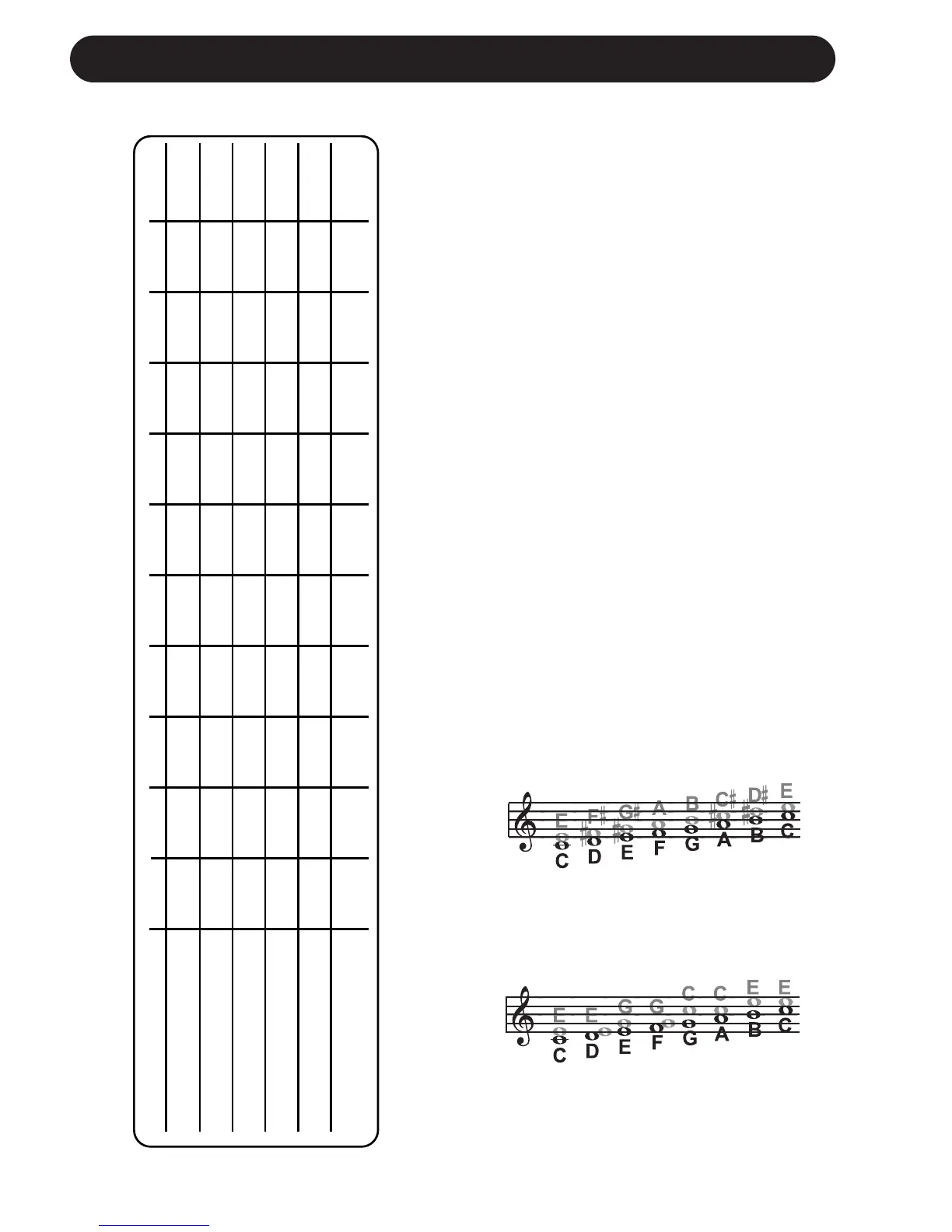24
HARMONY AND TUNING
Diatonic and Chromatic
We've described scalic and chordal harmonies
as diatonic, and shift harmonies as chromatic;
but what do those words mean?
Look at a piano keyboard. Between middle "C"
and the next "C" there are twelve keys - 7
white keys and 5 black keys. Each of those
keys are pitched one semitone apart for a total
of, you guessed it, 12 semitones. The chro-
matic scale uses all twelve semitone notes
opposed to the diatonic scales. Thus there is
only one chromatic scale, but 12 each of the
major, minor, etc. diatonic scales (C major, C#
major, D major, etc). Most of us have grown up
hearing the traditional "doh ray me fah so la
tee doh" diatonic scale, so that harmonies
based on the diatonic scale sound correct.
What does this mean, harmony-wise?
Diatonic scale harmonies can only use notes
within specified scale or chord, so a “third
above” harmony voice actually varies between
3 and four semitones above the lead note
where the chromatic harmony would stay
exactly 4 semitones (a major 3rd) above each
note.
To recap: we have three different harmony
modes that use chromatic or diatonic scales.
Shifting, which uses the chromatic, 12 semi-
tone scale, changes the input pitch by a fixed
number of semitones:
Chordal, which uses the root, third, fifth and
sometimes seventh of the many diatonic
scales, pitches the harmony voice to the
closest note contained within the chord:
Scalic, which uses one of many diatonic
scales, pitches the harmony voice to the near-
est note contained within the scale:
Lead Voice C C# D Eb E F F# G G# A Bb B
MAJ1
3rd Above E nc F nc G A nc B nc C D D
5th Above G nc A nc B C nc D nc E F F
MAJ2 3rd above E nc F nc G A nc C nc C D D
5th above G nc A nc C C nc E nc E F F
MAJ3 3rd above E nc F nc G A nc Bb nc C D D
5th above G nc A nc Bb C nc D nc E F F
MIN1 3rd above Eb nc F G nc Ab nc Bb C nc D nc
5th above G nc BbBbnc C nc D Ebnc F nc
MIN2 3rd above Eb nc F G nc A nc Bb C nc D nc
5th above G nc A Bb nc C nc D Eb nc F nc
MIN3 3rd above Eb nc F G nc Ab nc B C nc D nc
5th above G nc A Bb nc C nc D Eb nc F nc
